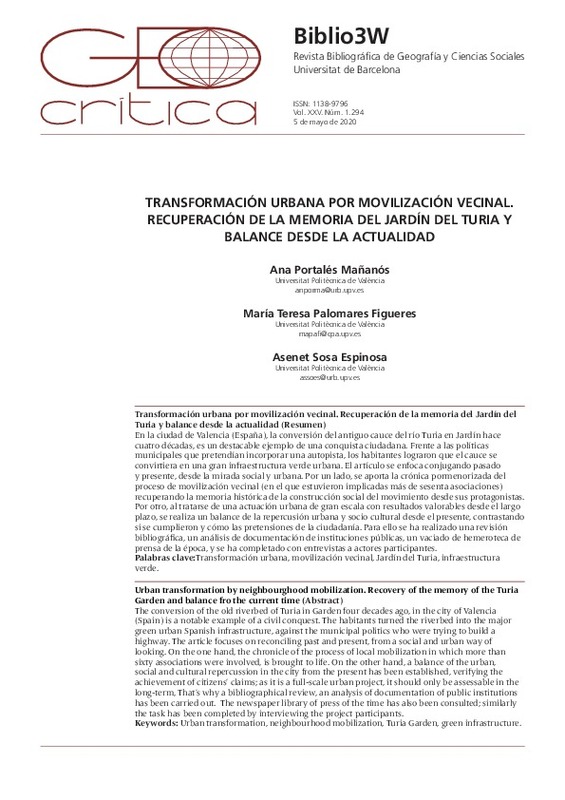JavaScript is disabled for your browser. Some features of this site may not work without it.
Buscar en RiuNet
Listar
Mi cuenta
Estadísticas
Ayuda RiuNet
Admin. UPV
Transformación urbana por movilización vecinal. Recuperación del Jardín del Turia y balance desde la actualidad
Mostrar el registro completo del ítem
Portales Mañanos, A.; Palomares-Figueres, M.; Sosa Espinosa, A. (2020). Transformación urbana por movilización vecinal. Recuperación del Jardín del Turia y balance desde la actualidad. Biblio 3W. Revista bibliográfica de Geografía y Ciencias Sociales. 25:1-28. https://doi.org/10.1344/b3w.25.2020.30803
Por favor, use este identificador para citar o enlazar este ítem: http://hdl.handle.net/10251/160913
Ficheros en el ítem
Metadatos del ítem
| Título: | Transformación urbana por movilización vecinal. Recuperación del Jardín del Turia y balance desde la actualidad | |
| Otro titulo: |
|
|
| Autor: | ||
| Entidad UPV: |
|
|
| Fecha difusión: |
|
|
| Resumen: |
[EN] The conversion of the old riverbed of Turia in Garden four decades ago, in the city of Valencia
(Spain) is a notable example of a civil conquest. The habitants turned the riverbed into the major
green urban Spanish ...[+]
[ES] En la ciudad de Valencia (España), la conversión del antiguo cauce del río Turia en Jardín hace
cuatro décadas, es un destacable ejemplo de una conquista ciudadana. Frente a las políticas
municipales que pretendían ...[+]
|
|
| Palabras clave: |
|
|
| Derechos de uso: | Reconocimiento (by) | |
| Fuente: |
|
|
| DOI: |
|
|
| Editorial: |
|
|
| Versión del editor: | https://doi.org/10.1344/b3w.25.2020.30803 | |
| Tipo: |
|









